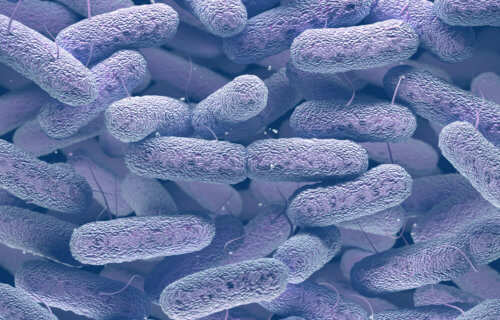PARIS — While antibiotics help to combat harmful pathogens, they have also been shown to kill good microorganisms that play a role in the body’s health. Some pathogens can adapt to become resistant to antibiotics, which can lead to a surge in illnesses. Recent research reveals that preserving the body’s microbiome may be key to preventing the rise of dangerous, drug-resistant microorganisms.
The microbiome, or collection of microbes that lives within each of us, plays a key role in overall health. Researchers have found more evidence that a strong and balanced microbiome helps avoid or combat illnesses, and prevents the spread of antibiotic-resistant pathogens.
When treating illnesses caused by microbial pathogens, antibiotics are an essential tool. However, they may also destroy beneficial microbiota. Because there is less competition for nutrients when a healthy microbiome is present, potentially hazardous microorganisms are more likely to flourish in the absence of beneficial bacteria.
More than 35,000 Americans die each year from an antibiotic-resistant illness, according to the Center for Disease Control and Prevention. They also report that 47 million antibiotic rounds prescribed each year from U.S. physicians’ clinics and emergency rooms for diseases that did not require antibiotics. This is approximately 30% of all antibiotics administered.
“The use of antibiotics may also result in the emergence of strains of both helpful and harmful bacteria with genetic mutations that allow them to survive antibiotics,” explains David Smith, lead author and a PhD student at The Pasteur Institute and the CESP laboratory in France, in a statement. “We used mathematical modelling to see how the effects of antibiotics on the microbiome might drive the spread of antibiotic-resistant bacteria in healthcare settings.”
‘Trade-off where antibiotics simultaneously clear harmful bacteria and make people more susceptible to infection’
Smith and his team demonstrated that antibiotic usage has a disproportionate impact on the growth of antibiotic-resistant microorganisms by modeling the relationships between dangerous bacteria and the microbiota. Antibiotics destroy the colonies of beneficial microbes that keep dangerous microorganisms at bay. “We demonstrate a trade-off where antibiotics can simultaneously clear harmful bacteria and make people more susceptible to infection with those same bacteria,” says Laura Temime, co-senior author and Professor at the National Conservatory of Arts and Crafts in France.
Following that, the researchers tested alternative preventive methods to see how well they would work in preventing the widespread transmission of drug-resistant bacteria such as C. difficile, methicillin-resistant Staphylococcus aureus, and multidrug-resistant Enterobacteriaceae.
Their findings demonstrate that taking safeguards against dangerous germs like Enterobacteriaceae has minimal advantages. Strategies that defend the microbiome, such as limiting the use of antibiotics or aiding patients in restoring their microbiome following antibiotic treatment, may help restrict the development of drug-resistant microorganisms in the future.
“Our study reveals how important it is to consider the protective effects of a healthy microbiome when designing strategies to reduce the dissemination of drug-resistant strains of bacteria,” concludes Lulla Opatowski, co-senior author and Professor in Mathematical Epidemiology at the University of Versailles Saint-Quentin-en-Yvelines. “Together, both antibiotic stewardship and interventions to support a healthy microbiome could be effective in mitigating the burden of these infections.”
This research is published in eLife.
